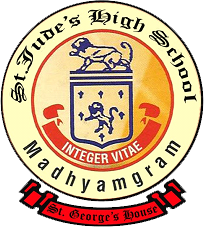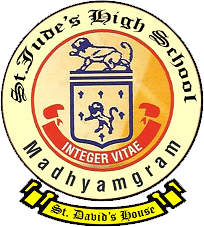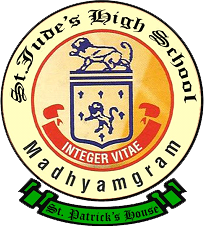Houses
St. Jude's High School has a developed House System. All students on arrival are allocated a House:
St. George's (Red House)
St. Andrew's (Blue House)
St. David's (Yellow House)
St. Patrick's (Green House)
The House System has two main purposes; firstly, a large school needs to be divided into smaller units to give each child a greater sense of belonging. Secondly, the House system is designed to give opportunities to students to lead, organize, take responsibility for or just participate in a variety of activities.
Each house has students House Captain / Vice Captains (of both sexes) and Tutor Group representatives. Activities range from Chess Competitions through talent Contest etc. There are also regular Sports Competitions, Non – Sporting Competitions etc.

St. George's (Red House)
Saint George (c. 275/281 – 23 April 303) was a Greek who became an officer in the Roman army. His father was the Greek Gerondios from Cappadocia Asia Minor and his mother was the Greek Polychronia from the city Lyda. Lyda was a Greek city from the times of the conquest of Alexander the Great (333 BC), now in Israel. He became an officer in the Roman army in the Guard of Diocletian. He is venerated as a Christian martyr. In hagiography, Saint George is one of the most venerated saints in the Catholic (Western and Eastern Rites), Anglican, Eastern Orthodox, and the Oriental Orthodox churches. He is immortalized in the tale of Saint George and the Dragon and is one of the Fourteen Holy Helpers. His memorial is celebrated on 23 April, and he is regarded as one of the most prominent military saints.

St. Andrew's (Blue House)
Andrew the Apostle (Greek: Ἀνδρέας, Andreas; from the early 1st century – mid to late 1st century AD; known by some as Saint Andrew), called in the Orthodox tradition Prōtoklētos, or the First-called, is a Christian Apostle and the brother of Saint Peter. The name "Andrew" (Greek: manly, brave, from ἀνδρεία, Andreia, "manhood, valour"), like other Greek names, appears to have been common among the Jews, Christians, and other Hellenized people of the region. No Hebrew or Aramaic name is recorded for him. He is considered the founder and the first bishop of the Church of Byzantium and is consequently the patron saint of the Ecumenical Patriarchate of Constantinople.

St. David's (Yellow House)
- Saint David (Welsh: Dewi Sant; c. 500 – c. 589) was a Welsh bishop of Menevia during the 6th century; he was later regarded as a saint and as the patron saint of Wales. David was a native of Wales, and a relatively large amount of information is known about his life. However, his birth date is still uncertain, as suggestions range from 462 to 512.The Welsh annals place his death 569 years after the birth of Christ, but Phillimore's dating revised this to 601.
- He became renowned as a teacher and preacher, founding monastic settlements and churches in Wales, Dumnonia, and Brittany. St David's Cathedral stands on the site of the monastery he founded in the Glyn Rhosyn valley of Pembrokeshire. He rose to a bishopric and presided over two synods against Pelagianism: the first at Brefi around 560 and the second at Caerleon (the "Synod of Victory") around 569.

St. Patrick's (Green House)
Saint Patrick (Latin: Patricius; Proto-Irish: *Qatrikias; Modern Irish: Pádraig; Welsh: Padrig; c. 387 – 17 March c. 460 or c. 492) was a Romano - British Christian missionary and bishop in Ireland. Known as the "Apostle of Ireland", he is the primary patron saint of the island, along with Saints Brigid and Columba.
Two authentic letters from him survive, from which come the only generally-accepted details of his life. When he was about 16, he was captured from his home by pagan raiders and taken as a slave to Ireland, where he lived for six years before escaping and returning to his family. After becoming a cleric, he returned to northern and western Ireland as an ordained bishop, but little is known about the places where he worked. By the seventh century, he had already come to be revered as the patron saint of Ireland.
Most available details of his life are from subsequent hagiographies, and these are now not accepted without detailed criticism. The Annals of Ulster state that he arrived in Ireland in 432, ministered in Ulster around 443, and died in 457 or 461. The text, however, distinguishes between "Old Patrick "and "Patrick, arch-apostle of the Scots," who died in 492. The actual dates of Patrick's life cannot be fixed with certainty but, on a widespread interpretation, he was active as a missionary in Ireland during the second half of the 5th century. He is generally credited with being the first bishop of Armagh, Primate of All Ireland.





